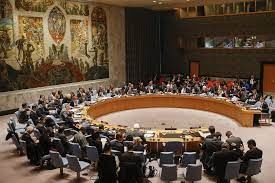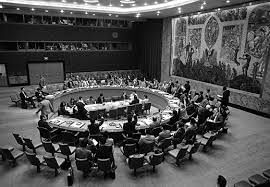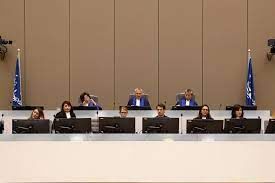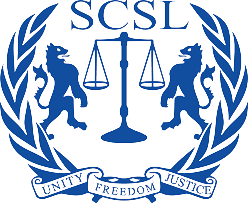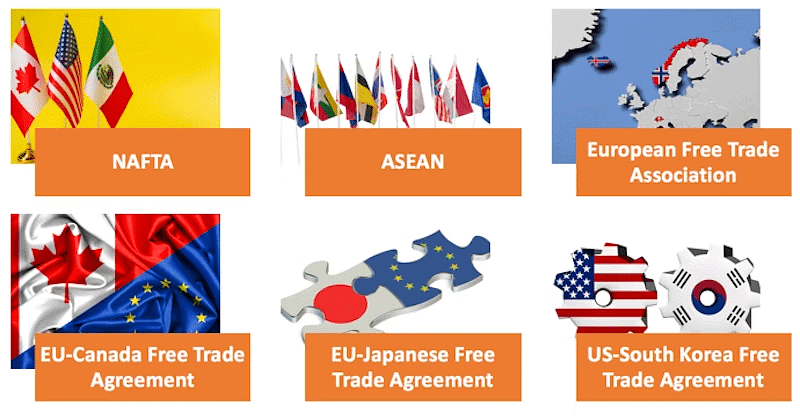International Law - 1 | Legal Reasoning for CLAT PDF Download
International Law
International law is divided into two kinds – public international law and private international law.
- Private international law: It is known as a ‘conflict of laws, and it essentially refers to which country’s law should be applicable to a particular dispute. It is usually deployed by the domestic courts of a country.
- Public international law: It concerns the structure and conduct of sovereign states and inter-governmental and international organizations.

History of Public International Law
Although international law in the modern sense of the word has only existed since about the 16th century, many historians of international law also take ancient history into account as a source for the early development of international legal principles.
- Roman law concept of ius civile and ius gentium: In that respect, important concepts are derived from the practice between Greek city-states and the Roman law concept of ius civile (which regulated the relationship between Roman citizens mutually) and ius gentium (which regulated the relationship between Roman citizens and non-Roman people).
- De Jure Belli Ac Pacis: Hugo Grotius’ treatise titled De Jure Belli Ac Pacis, authored in 1625, marks the beginning of the modern theory of international law. It dealt with the law of war and peace.
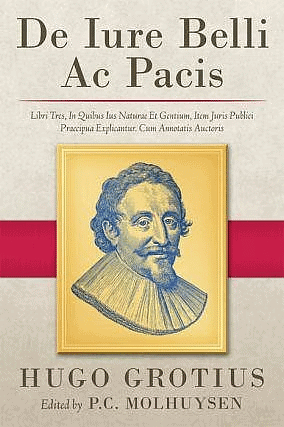
- Peace Pact: Beginning with the Peace of Westphalia in 1648, where several European nations signed a peace pact, the concept of the sovereign “nation-state”, which consisted of a nation controlled by a centralized system of government gained a fillip. The existence of several nation-states implied the necessity of a body of rules which would govern the conduct amongst them.
- Two main branches: The field of study in international law combines two main branches: the law of nations (jus gentium) and international agreements and conventions (jus inter gentes), which have different theoretical foundations and should not be confused.
What are the components of International Law?
The sources of international law are custom, treaty, and general principles of law (this would include some of the principles recognized in the domestic law of nations, say for example, the recognition that a company has a separate legal existence, equity, good faith, etc.).
Further, there is a separate set, known as subsidiary sources, which are opinions of judges in prior cases and opinions of eminent legal scholars as mentioned in their writings.
Treaties
Treaties are of two kinds – bilateral and multilateral.
- Bilateral Treaty: A bilateral treaty is one concluded between two states only and is also known as a treaty contract. Double Taxation Agreements are generally bilateral treaties.
- Multilateral agreements: Multilateral agreements are agreements entered into by several nations, such as the United Nations Agreement, the International Covenant on Civil and Political Rights (ICCPR), the International Convention of Economic, Social and Cultural Rights (ICESCR), the Refugee Convention, Convention on the International Sale of Goods (CISG) and the Agreement establishing the World Trade Organisation, etc.
- Vienna Convention on the Law of Treaties: In the same way as the provisions of any contract in India are to be interpreted in accordance with the Indian Contract Act, of 1872, treaties are to be interpreted in accordance with the Vienna Convention on the Law of Treaties (or VCLT), 1969. The Convention entered into force on 27 January 1980. The VCLT has been ratified by 110 nation-states as of October 2009.
International Telecommunications Union
While rules governing the conduct of independent nations inter-se continued to evolve, it was not until the late 1800s that a separate international organisation consisting of various nations as its members was formed.
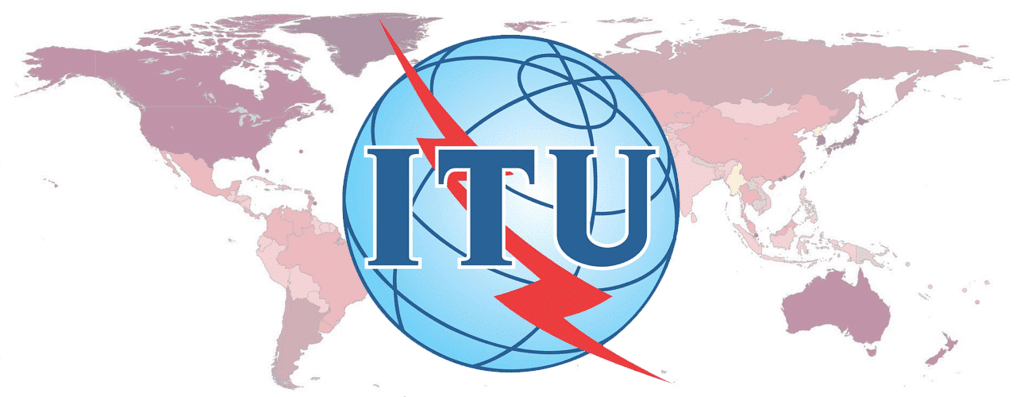
- The International Telecommunication Union is the eldest organization in the UN family still in existence.
- It was founded as the International Telegraph Union in Paris on 17 May 1865 and is today the leading United Nations agency for information and communication technology issues, and the global focal point for governments and the private sector in developing networks and services.
Universal Postal Union
Prior to the establishment of the UPU, a country had to conclude a separate postal treaty with each other country that it wished to carry international mail to or from.
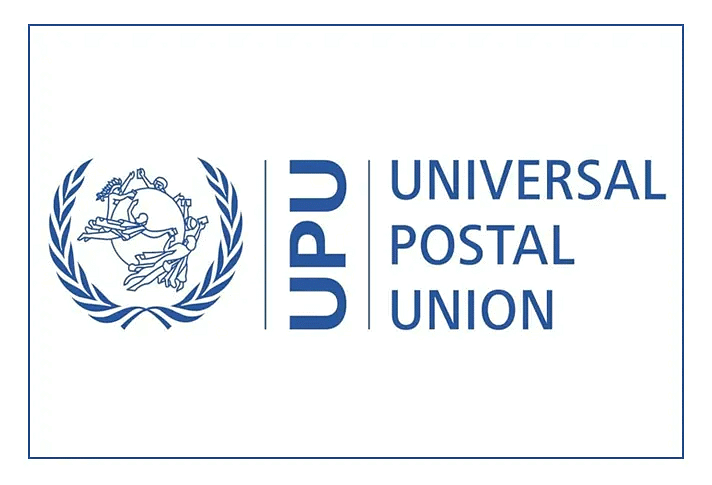
- The Universal Postal Union was created in 1874, under the name “General Postal Union“, as a result of the Treaty of Berne signed on 9 October 1874.
- Its most important reform was that postal authorities were required to give equal treatment to foreign and domestic mail.
- Further, it was not required anymore to affix the stamps of any country through which one’s letter or package would pass in transit (this would pose a tremendous problem previously); the UPU provides that stamps of member nations are accepted for the whole international route.
- Its name changed to Universal Postal Union in 1878. After the foundation of the United Nations, the UPU became a specialized agency in the UN. The organization is headquartered in Berne, Switzerland.
United Nations
The name ‘United Nations’ was devised by the ex-United States President Franklin D. Roosevelt and was used in the “Declaration by United Nations” of January 1, 1942, during the Second World War, when the representatives of 26 countries pledged their governments to continue fighting against the Axis Powers.
- The United Nations is the hope and conscience of the world, more especially of the smaller nations among the 192 members. It is an association of states which have pledged themselves to maintain international peace and security and cooperate in solving international political, economic, social, cultural, and humanitarian problems towards achieving this end.
- The United Nations charter, the constituting instrument of the UN was drawn up by the members of 50 countries at the United Nations Conference on International Organization, which met in San Francisco from April 25, 1945, to June 26, 1945.
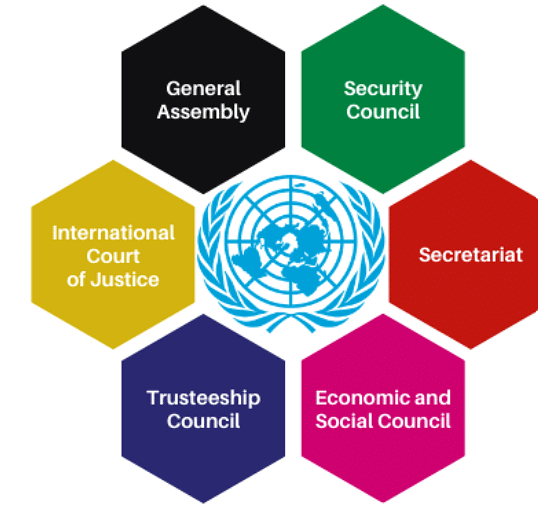
Principal Organs of the United Nations
- Those delegates deliberately on the basis of proposals worked out by the representatives of China, The Soviet Union, The United Kingdom and The United States at Dumbarton Oaks, Washington DC from August 21, 1944 to September 28, 1944. The charter was signed on June 26, 1945, by the representatives of 50 countries.
- Poland, which was not represented at the conference signed it later and became one of the original 51 Member States.
- The United Nations officially came into existence on October 24, 1945, with the deposit of the requisite number of ratifications of the Charter with the US Department of State. United Nations Day is celebrated on October 24 each year.
- New Member States are admitted by the General Assembly on the recommendations of the Security Council. Tuvalu was admitted in September 2000 as the 189th Member State. East Timor was admitted as a member of the United Nations in September 2002. Switzerland joined the world organization in the same month.
- Montenegro became a United Nations member on June 28, 2006. In 1971, Communist China was admitted as the representative of all of China. Red China thus became a permanent member of the security council of the United Nations.
- Vatican City is a permanent observer. There are 6 official languages of the United Nations they are Arabic, Chinese, English, French, Russian, and Spanish. The flag of the United Nations has an emblem of the United Nations in white centered on a light blue background. The United Nations has its headquarters in New York.
- The UN, along with Kofi Annan, the then Secretary General received the Nobel Peace Prize in 2001. Kofi Annan (of Ghana) is the only United Nations Secretary General to be re-elected to the post. Kofi Annan hails from Ghana. The current Secretary-General is Ban Ki-moon of South Korea, who took office on 1 January 2007. His first term will expire on 31 December 2011, and he will be eligible for reappointment
- The following are the main organs of the United Nations: General Assembly; Secretariat; Security Council; Trusteeship Council; Economic and Social Council and International Court of Justice. In number, the United Nations has 6 main organs.
General Assembly
It consists of the representatives of all the Member States. Each state has one vote but it can send as many as 5 representatives. The General Assembly meets at least once a year and elects its own President and Vice President. The general assembly has its headquarters in New York.
All other bodies of the UN report to the General Assembly. It discusses and makes recommendations on any subject covered under the UN charter except those with which the Security Council may be dealing.
Security Council
It has its headquarters in New York. It consists of 15 members, each of whom has one vote. There are 5 permanent members and 10 non-permanent members elected for a 2 year term by a two-thirds majority of the general assembly. The permanent members have the power to veto any move and the retiring members are not eligible for immediate re-election.
The presidency of the Security Council is held for a one-month period in rotation by the Member States in the English alphabetical order of their names. The permanent members of the UN Security Council are China; France; Russia; USA; UK.
The non-permanent members are Austria, Japan, Mexico, Turkey, and Uganda (All until December 31, 2010), Bosnia and Herzegovina, Lebanon, Brazil, Gabon, and Nigeria (until December 31, 2011). The Security Council is responsible for international peace and security. Any nation irrespective of its membership in the UN can put forward its problem in front of the council. The Security Council can suggest a peaceful solution or may use force to restore peace.
The Economic and Social Council
It has 54 members and is responsible under the general assembly for carrying out the functions of the UN with regard to international economic, social, cultural, educational, health, and related matters. It has its headquarters in New York and its members are elected by a two-thirds majority in the general assembly. One-third of the members are elected every year to serve for a period of three years and one-third of the members retire annually.
The following are the council’s regional economic commissions: Economic Commission of Europe (ECE, Geneva), Economic and Social Commission for Asia and the Pacific (ESCAP, Bangkok), Economic Commission for Latin America and the Caribbean (ECLAC, Santiago), Economic Commission for Africa (ECA, Addis Ababa), Economic Commission for Western Asia (ESCWA, Amman).
Trusteeship Council
The charter of the UN provides for an international trusteeship system to safeguard the interests of the inhabitants of territories that are not fully self-governing and which may be placed there under individual trusteeship agreements. The Trusteeship Council has its headquarters in New York.
The membership to the Trusteeship Council includes the five permanent members of the Security Council plus those nations who administer Trust Territories All of the original 11 trust territories have become independent or joined independent countries. The Council is presently inactive as there are no trust territories left anymore.
International Court of Justice
Also known as the World Court, it is based in the Peace Palace in The Hague, Netherlands. The ICJ was created by an international treaty, the statute of the court which forms an integral part of the UN charter.
- Number of Judges: The ICJ is composed of fifteen judges elected for nine year terms. Judges serve for nine year terms and may be re-elected for up to two further terms.
- Election Procedure: The election is done by UN General Assembly and the UN Security Council from a list of persons nominated by the national groups in the Permanent Court of Arbitration.
- Frequency of Elections: Elections take place every three years, with one-third of the judges retiring (and possibly standing for re-election) each time, in order to ensure continuity within the court.
- Current President: Hishashi Owada of Japan is the current President of the International Court of Justice.
- Indians at the ICJ: 3 Indians have been permanent judges of the ICJ, as follows:
(i) Benegal Rama Rau (1952-1953)
(ii) Nagendra Singh (1973-1988), who was President (1985–1988) and Vice-President (1976–1979).
(iii) Pathak Raghunandan Pathak (1989-1991)
Status of Precedents
The law of precedent or stare decisis, whereby a Court relies upon its own prior decisions or the decisions of a judicial body superior to itself, does not apply in the ICJ, and the ICJ is not bound to follow what it laid down in its previous decisions. However, the ICJ repeatedly cites principles it has developed in its prior case law, in cases that come before it subsequently.
Jurisdiction of the Court
It gives advisory opinions on legal matters to the bodies and special agencies of the UN and considers the legal matters that are brought before them. All members of the UN charter are ipso facto parties to the Statute of the Court. All questions are decided by the majority. The official languages of the court are French and English.
➤ The Secretariat
- The Secretariat is composed of the Secretary-General, who is the chief administrative officer of the organization, and an international staff appointed by him under regulations established by the General Assembly. However, the Secretary-General, the High Commissioner for Refugees, and the Managing Director of the Fund are appointed by the General Assembly.
- Dr. Asha-Rose Migiro of Tanzania took office as Deputy Secretary General on February 1, 2007, and is the third person to hold this post since it was introduced in 1997. The tenure of the secretariat is five years and is eligible for re-election after the expiry of the term. It is the chief administrative office of the UN that coordinates and supervises the activities of the UN.
- Trygve Lie of Norway was the First Secretary General of the UN.
- The present secretary general of the UN is Ban ki Moon. He hails from South Korea and is also the only Asian to hold the post since 1975.
- U.Thant was elected as the 3rd secretary general and he was the first Asian to be appointed for the post in 1961.
Permanent Court of Arbitration (PCA)
The PCA was established by the Convention for the Pacific Settlement of International Disputes, and concluded at The Hague in 1899 during the first Hague Peace Conference. The Conference was convened at the initiative of Czar Nicolas II of Russia. The 1899 Convention was revised in 1907 at the second Hague Peace Conference. 110 countries are members of one or both of the founding conventions.
The PCA provides services for the resolution of disputes involving various combinations of states, state entities, intergovernmental organizations, and private parties. Its Secretary General is Christiaan M.J. Kröner.
➤ Special Tribunals
- The United Nations established special international criminal tribunals in Rwanda and Yugoslavia to prosecute those responsible for atrocities during times of war and genocide. Successful convictions of these political and military leaders are meant to bring justice to victims and to deter others from committing such crimes in the future.
International Criminal Tribunal for the Former Yugoslavia, 1991
The Tribunal is a body of the United Nations established to prosecute serious crimes committed during the wars in the former Yugoslavia and to try their perpetrators. The tribunal is an ad hoc court which is located in The Hague, the Netherlands. It was constituted pursuant to a Security Council Resolution.
International Criminal Tribunal for Rwanda
The International Criminal Tribunal for Rwanda (ICTR), was established in order to judge people responsible for the Rwandan genocide and other serious violations of international law in Rwanda, or by Rwandan citizens in nearby states, between 1 January and 31 December 1994.
In 1995 it became located in Arusha, Tanzania (from 2006, Arusha also became the location of the African Court on Human and Peoples’ Rights). The first trial, of Jean-Paul Akayesu, began in 1997. Jean Kambanda, interim Prime Minister, pleaded guilty.
International Criminal Court
These special tribunals gave impetus to the formation of the International Criminal Court (ICC), finally established in 2003. The International Criminal Court (ICC) brings to trial those who commit large-scale political crimes – genocide, war crimes and crimes against humanity, and the crime of aggression (although it cannot currently exercise jurisdiction over the crime of aggression). The ICC’s first trial, of Congolese militia leader Thomas Lubanga, began on 26 January 2009. On 24 November 2009, the second trial started, against Congolese militia leaders Germain Katanga and Mathieu Ngudjolo Chui. As of October 2009, 110 countries have joined the court, including nearly all of Europe and South America, and roughly half the countries in Africa. Three states — Israel, Sudan, and the United States — have “unsigned” the Rome Statute, indicating that they no longer intend to become state parties and, as such, they have no legal obligations arising from their signature of the statute. The current President of the Court is Sang-Hyun Song, who was elected on 11 March 2009.
Special Court for Sierra Leone
Sierra Leone suffered through a ten-year civil war, where multiple groups have been alleged to have committed war crimes. The Revolutionary United Front (RUF), led by Foday Sankoh, used amputations and mass rape to terrorize the population and gain control of the country’s lucrative diamond mines. Charles Taylor, then president of neighboring Liberia, backed the insurgency by providing arms and training to the RUF in exchange for diamonds.
The pro-government Civil Defense Force (CDF), under the leadership of Sam Hinga Norman, committed serious offenses as well. In 1999 the UN eventually brokered the Lome Peace Accord between the warring parties.
In January 2002 the UN approved the Special Court for Sierra Leone (SCSL) to try those responsible for the crimes committed during the civil war. Based in the country where the atrocities were committed and combining international and domestic law, the SCSL ushers in a new generation of international tribunals. It is believed that this would provide justice faster and at a cheaper cost than its predecessors, the Tribunals for Yugoslavia and Rwanda.
➤ Special Tribunal for Lebanon
- The court was established by an Agreement between the United Nations and Lebanon pursuant to a Security Council resolution in March 2006. The Special Tribunal for Lebanon is an international criminal tribunal for the prosecution, under Lebanese law, of criminal acts relating to the assassination of Rafik Hariri on February 14, 2005.
- The tribunal marks the first time that a UN-based international criminal court tries a “terrorist” crime committed against a specific person. Antonio Cassese, a noted international criminal lawyer from Italy, was appointed the President of the tribunal on March 24, 2009.
- Special Tribunals had also been constituted for Cambodia and East Timor.
Famous International Jurists and the Books authored by them
- Vittel – Le Droit De Gens Our Principe’s De La Loi Naturelle (Translated Into “The Law of Nations Or Principles Of Natural Law”)
- Samuel Von Pufendorf The Two Books of The Duty of Man and Citizen According to Natural Law
- International Refugee Law: A Reader by B S Chimni
- International Law And World Order: A Critique Of Contemporary Approaches by B S Chimni
- International Commodity Agreements: A Legal Study by B. S. Chimni
- Legal regime of the sea-bed and the developing countries by R. P. Anand
- New States and international law by R. P. Anand
- Studies in international adjudication by R. P. Anand
- International Law and the developing countries by R. P. Anand
- International Criminal Law and Human Rights – Manoj Kumar Sinha
- Charter of the United Nations – Bruno Simma
- International Law and the Use of Force by States – Ian Brownlie
Free Trade Agreements and Regional Trade Organisations
Under the present international system, a body of international law for facilitating trade between various nations has developed, which is known as international trade law. The World Trade Organisation, established in 1995 is a famous example of such an organisation. Such organizations also exist at the regional level. Some examples of them are: Mercosur was established among Argentina, Brazil, Paraguay, and Uruguay founded in 1991 by the Treaty of Asunción. Bolivia, Chile, Colombia, Ecuador, and Peru currently have associate member status. Venezuela signed a membership agreement on 17 June 2006, but before becoming a full member its entry has to be ratified by the Paraguayan parliament.
The ASEAN agreement was signed on 28 January 1992 in Singapore. When the AFTA agreement was originally signed, ASEAN had six members, namely, Brunei, Indonesia, Malaysia, Philippines, Singapore, and Thailand. Vietnam joined in 1995, Laos and Myanmar in 1997 and Cambodia in 1999. AFTA now comprises ten countries of ASEAN.
NAFTA – North American Free Trade Area
SAARC – South Asian Association for Regional Cooperation
Apart from regional agreements, countries may have free trade agreements with each other, subject to their compliance with WTO law. For example, India has a Free Trade Agreement with the ASEAN, and expects to enter into one with the European Union by the end of 2010.
India also has a special kind of free trade agreement, known as a Comprehensive Economic Cooperation Agreement (which deals with free trade not only in goods, but also services and mobility of investment and capital) with Singapore, and expects to enter into one with Malaysia as well by the end of 2010.
|
63 videos|172 docs|37 tests
|


